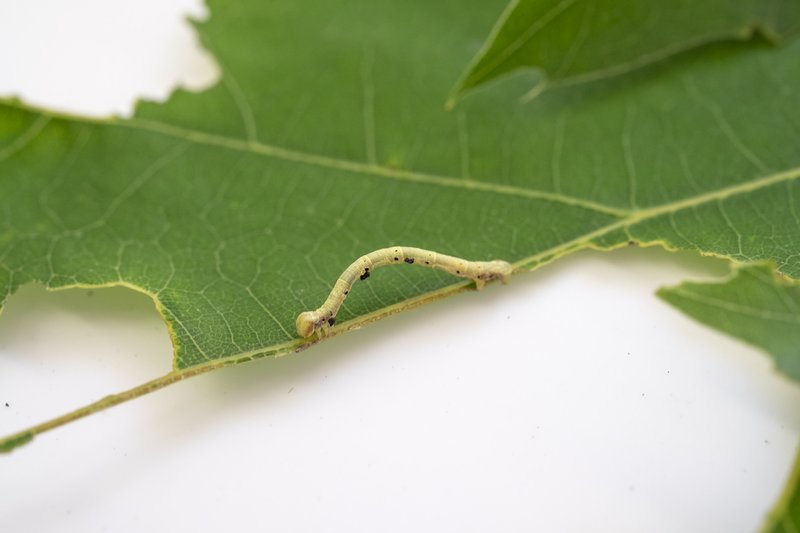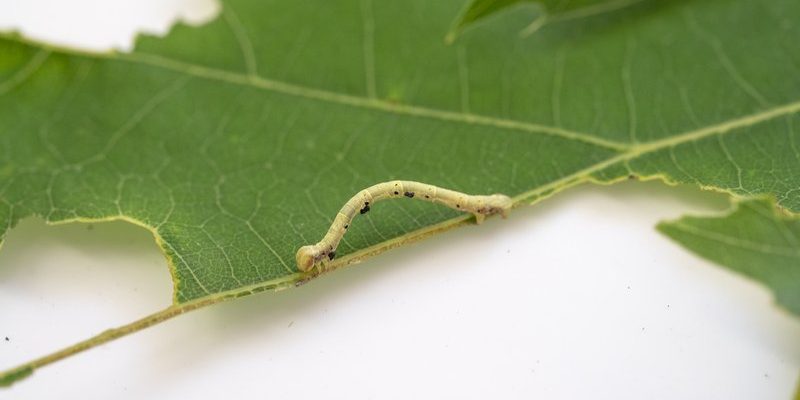
Inchworms, with their distinctive movement and almost comical appearance, have a vital role in the ecosystem. They thrive in environments where leaves are abundant and their survival is closely tied to seasonal changes. Understanding how inchworms interact with leaf fall can give us insights into the health of our environment. So, grab a cup of coffee and let’s explore this connection together!
What Are Inchworms?
Inchworms are actually the larvae of various species of moths, primarily belonging to the Geometridae family. They get their name from their unique way of moving, which resembles measuring inches as they inch along. When you see them, you might notice how they arch their bodies and then stretch out, creating that characteristic “looping” motion. It’s a bit like watching a tiny gymnast at work.
These little creatures often have green or brown coloration that helps them blend into their surroundings—think of them as nature’s camouflage experts. They typically feed on leaves, making them herbivores, and their diet mainly consists of tree and shrub foliage. So, when leaves start to fall, especially in the autumn, you might wonder what happens to these inchworms and how they navigate through their changing world.
Why Do Leaves Fall in Autumn?
Leaves fall for a variety of reasons, primarily as part of a tree’s survival strategy. Many trees prepare for the winter by shedding their leaves to conserve water and energy. The process of leaves changing color and eventually dropping is fascinating. It begins with a decrease in chlorophyll, the green pigment that helps plants photosynthesize. As the chlorophyll fades, other pigments become visible, creating the vibrant reds, oranges, and yellows we associate with fall.
This transition isn’t just beautiful; it’s crucial for the ecosystem. When leaves fall, they create a blanket on the forest floor, which benefits soil health. As these leaves decompose, they return nutrients to the soil, supporting plant growth for the next season. This is where inchworms come into play, as they help break down the fallen leaves, continuing the cycle of growth and decay.
The Role of Inchworms in Leaf Decomposition
Inchworms are more than just cute little creatures; they’re essential players in the process of leaf decomposition. When leaves fall, these larvae emerge in numbers to feast on the decaying foliage. By munching on the dead leaves, inchworms contribute to breaking them down into smaller pieces, which can then be further decomposed by fungi and bacteria.
This decomposition process releases vital nutrients back into the soil, which is necessary for plants’ health. Without inchworms and other decomposers, fallen leaves would take much longer to break down. So, the next time you spot an inchworm inching its way along a fallen leaf, remember that it’s not just wandering aimlessly—it’s doing valuable work for the ecosystem.
Inchworms and Ecosystem Health
The health of inchworm populations can tell us a lot about our ecosystem’s overall well-being. If you notice a significant increase in inchworm numbers, it may be a sign that there’s plenty of healthy foliage available for them to eat. Conversely, a decline in inchworm populations might indicate ecological problems, such as pollution, loss of habitat, or the impacts of pesticides.
Inchworms are also an essential food source for many animals. Birds, frogs, and even some small mammals rely on these little critters for protein. So, when you think about leaf fall in connection with inchworms, you’re also considering how this relationship supports larger food webs. Healthy inchworm populations mean healthy predators, contributing to a balanced ecosystem.
How Climate Change Affects Inchworms and Leaf Fall
Climate change has far-reaching effects on our environment, and inchworms and leaf fall are not exempt. Changes in temperature and precipitation patterns can alter the timing of when leaves fall and when inchworms emerge. For example, warmer winters might lead to earlier leaf growth, disrupting the synchronicity between these larvae and their food sources.
Additionally, climate change can affect tree health, making them more vulnerable to pests and diseases. This can lead to fewer leaves available for inchworms to feed on, impacting their populations. As a result, the entire ecosystem’s balance can be thrown off. If you care about the environment, this connection between inchworms, leaf fall, and climate change should be a wake-up call to engage in sustainable practices that help protect our natural world.
How to Support Inchworms in Your Garden
If you’re a gardening enthusiast, you might want to consider ways to support inchworm populations. Here are a few tips to create a friendly habitat for them:
- Plant native trees and shrubs: These provide the right kind of leaves for inchworms to thrive.
- Avoid pesticides: Chemicals can harm not just inchworms but also other beneficial insects.
- Compost fallen leaves: Instead of raking them all up, create a compost pile, allowing inchworms to do their work while enriching your soil.
- Create habitats: Leave some areas of your garden a bit wild, with dense foliage where inchworms can hide and thrive.
By supporting inchworms in your garden, you’re actively participating in the food web and helping maintain ecological balance. It’s a win-win, right?
The connection between inchworms and leaf fall is a reminder of how interconnected our natural world is. Inchworms play a crucial role in breaking down leaves, supporting the health of the soil, and thus the overall ecosystem. As leaves flutter down in autumn, consider not just the beauty of the season, but the unseen work happening below—the inchworms, the decomposers, and the life cycles that are crucial for our planet’s health.
By being mindful of how we interact with our environment, we can foster a healthier space for inchworms and all the other creatures that depend on this delicate balance. So next time you see an inchworm, give it a little nod of appreciation—it’s doing more for the ecosystem than you might have ever imagined!

